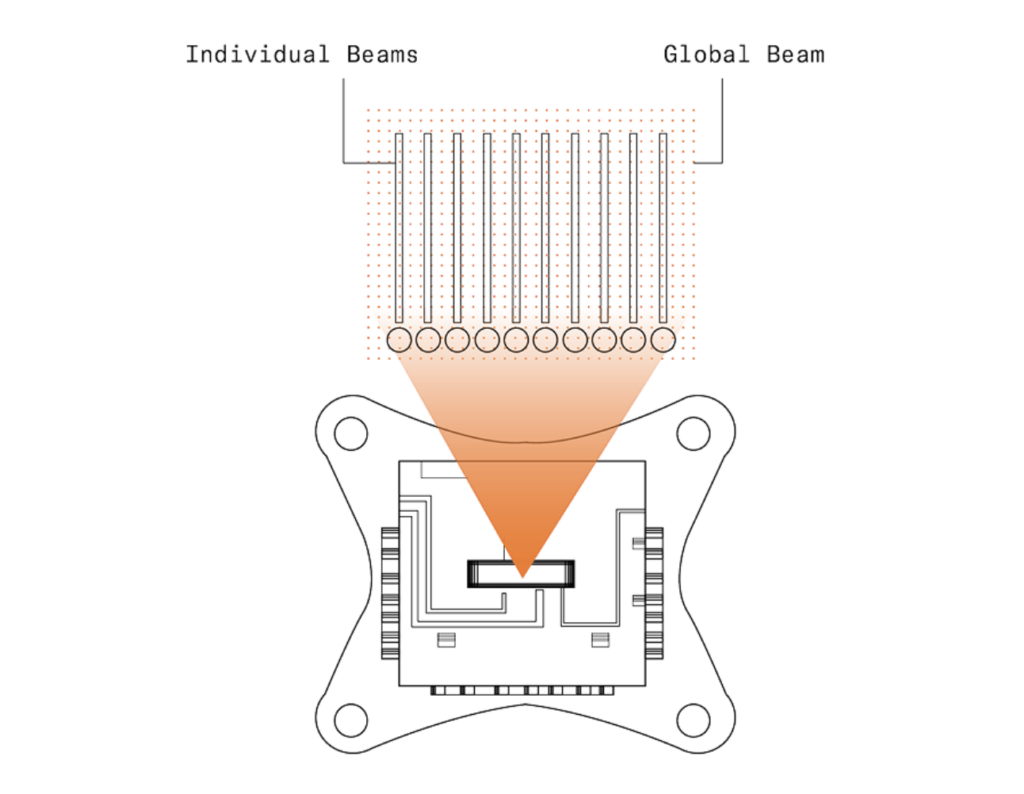Insider Brief
- Researchers have demonstrated that quantum entanglement follows universal rules across all spacetime dimensions by applying thermal effective theory, according to a study published in Physical Review Letters.
- The team showed that Rényi entropy, a key measure of entanglement, is governed by a small set of parameters—including Casimir energy—regardless of dimensionality, revealing structural universality in complex quantum systems.
- This marks the first application of thermal effective theory to quantum information, potentially advancing simulations of many-body systems and contributing to the theoretical foundations of quantum gravity.
- Image: Quantum entanglement in 1+1 and 2+1 dimensions (Yuya Kusuki)
PRESS RELEASE — A team of theoretical researchers used thermal effective theory to demonstrate that quantum entanglement follows universal rules across all dimensions. Their study was published online on August 5, in Physical Review Letters as an Editors’ Suggestion.
“This study is the first example of applying thermal effective theory to quantum information. The results of this study demonstrate the usefulness of this approach, and we hope to further develop this approach to gain a deeper understanding of quantum entanglement structures,” said lead author and Kyushu University Institute for Advanced Study Associate Professor Yuya Kusuki.
In classical physics, two particles that are far apart behave independently. However, in quantum physics, two particles can exhibit strong correlations regardless of the distance between them. This quantum correlation is known as quantum entanglement. Quantum entanglement is a fundamental phenomenon underlying quantum technologies such as quantum computation and quantum communication, and understanding its structure is important both theoretically and practically. One of the key measures used to quantify quantum entanglement is the Rényi entropy. Rényi entropy quantifies the complexity of quantum states and the distribution of information, and plays a crucial role in the classification of quantum states and in assessing the feasibility of simulating quantum many-body systems. Moreover, Rényi entropy serves as a powerful tool in theoretical investigations of the black hole information loss problem, and frequently appears in the context of quantum gravity.

But uncovering the structure of quantum entanglement is a challenge for both theoretical physics and quantum information theory. However, most studies to date have been limited to (1+1)-dimensional systems, or 1 spatial dimension plus time dimension. In higher dimensions, analyzing the structure of quantum entanglement becomes significantly more difficult (Figure 1).
A research group led by Kusuki, The University of Tokyo Kavli Institute for the Physics and Mathematics of the Universe (Kavli IPMU, WPI) and the California Institute of Technology (Caltech) Professor Hirosi Ooguri, and Caltech researcher Sridip Pal, has shown the universal features of quantum entanglement structures in higher dimensions by applying theoretical techniques developed in the field of particle physics to quantum information theory.
The research team focused on the thermal effective theory, which has recently led to major advances in the analysis of higher-dimensional theories in particle physics. This is a theoretical framework designed to extract universal behavior from complex systems, based on the idea that observable quantities can often be characterized by only a small number of parameters. By introducing this framework into quantum information theory, the team analyzed the behavior of Rényi entropy in higher-dimensional quantum systems. Rényi entropy is characterized by a parameter known as the replica number. The team demonstrated that, in the regime of small replica number, the behavior of the Rényi entropy is universally governed by only a few parameters, such as the Casimir energy, a key physical quantity within the theory. Furthermore, by leveraging this result, the team clarified the behavior of the entanglement spectrum in the region where its eigenvalues are large. They also investigated how universal behavior changes depending on the method used to evaluate the Rényi entropy. These findings hold not only in (1+1) dimensions, but in arbitrary spacetime dimensions, marking a significant step forward in the understanding of quantum entanglement structures in higher dimensions.
The next step for the researchers is to further generalize and refine this framework. This work represents the first demonstration that thermal effective theory can be effectively applied to the study of quantum entanglement structures in higher dimensions, and there remains ample room to further develop this approach. By improving the thermal effective theory with quantum information applications in mind, researchers could gain a deeper understanding of quantum entanglement structures in higher-dimensional systems.
On the applied side, the theoretical insights gained from this research may lead to improvements in numerical simulation methods for higher-dimensional quantum systems, propose new principles for classifying quantum many-body states, and contribute to a quantum-information-theoretic understanding of quantum gravity. These developments hold promise for broad and impactful future applications.


















